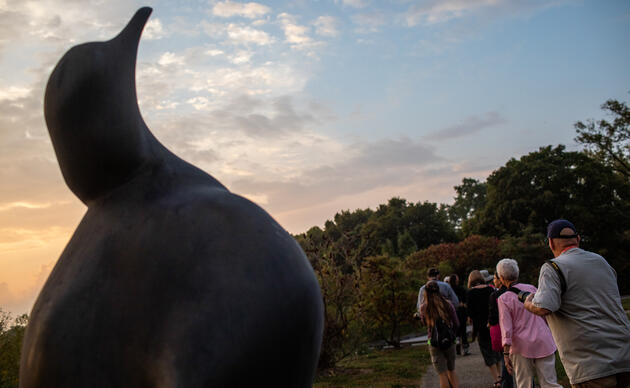This winter, we transformed the center library into a birdwatching headquarters for Project FeederWatch, and Conservation Classroom students got a front row seat to all the avian action! Conservation Classroom is an immersive nature-based field trip experience designed for Columbus City School students. Classrooms visit the center three times throughout their school year to explore topics like migration, native habitat, and the importance of biodiversity. Grange Insurance Audubon’s lead educator, Anne Scott, facilitates exciting activities from native tree planting to invasive honeysuckle removal, and most recently Project FeederWatch!
What better way to learn about common Ohio birds than watching feeders? Project FeederWatch turns the simple act of feeding birds into scientific discoveries. This citizen science project, organized by The Cornell Lab of Ornithology and Birds Canada, is a November through April study of birds that visit backyards, nature centers, and other community areas. FeederWatch is a unique monitoring tool for more than 100 bird species that winter in North America, helping scientists understand factors like long-term trends in species distribution and expansions, or contractions in the winter ranges of feeder birds.
During each Conservation Classroom session in the winter and early spring, visiting students gathered in our library to watch the feeders that border our sensory garden and native prairies. They worked as a group to count the highest number of a single bird species seen at one time and recorded that data in their study journals. Students used Ohio bird guides to try to identify the species that they saw by focusing on key characteristics like plumage, beak shape, and size.
Our most common feeder visitors this winter were House Finches and House Sparrows, unsurprisingly, as well as White-throated Sparrows, American Tree Sparrows, and Downy Woodpeckers. It was a particularly exciting day when a resident Red-shouldered Hawk swooped down in a predation attempt and students got to watch as the bird perched on the roof of the center and ate its hard earned lunch!
Conservation Classroom students submitted 22 bird species to our FeederWatch data this year, with a grand total of 424 individual birds counted. Community science opportunities like Project FeederWatch help students to build identification and observation skills, and encourage a deeper connection to the natural world around them. Conservation Classroom seeks to inspire the next generation of environmental stewards by opening doors for curiosity and learning in nature one bird count at a time!






